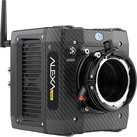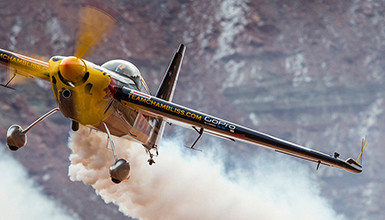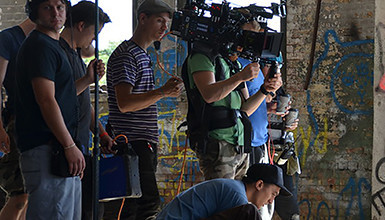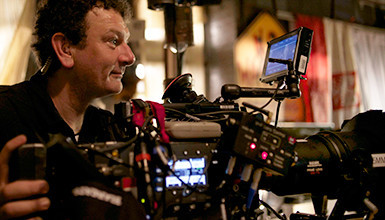
ALEXA 4:3 and anamorphic lenses. Nicholas was nice enough to answer a few questions about the project and his experience on set.
Can you give us a sense of the overall concept of the film?
NM: Jackrabbit 29 is an unconventional, character-driven thriller by writer & director Kyle Klubal. When a young couple goes missing, a large reward is issued for their return. The reward attracts an eccentric mix of characters to the town including bounty hunters, hitmen, and more. We follow them as they cross paths and search for the missing couple. Full of bizarre characters, a nonlinear story-line, and all sorts of twists and turns, it was quite the journey shooting this picture with my fantastic crew and it allowed us to capture a wide range of experimental photography.
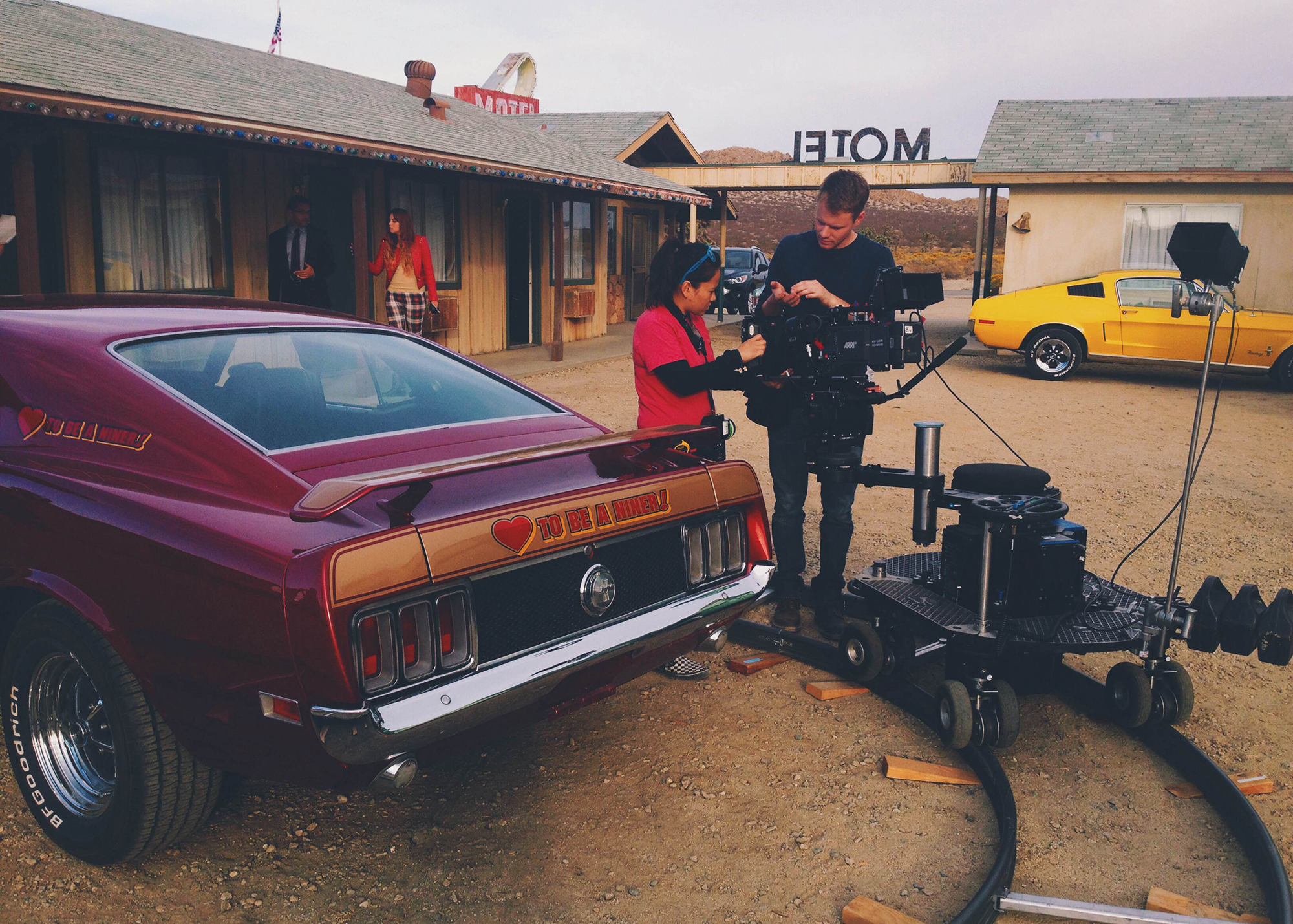
How did you come to the decision to go anamorphic?
NM: Kyle Klubal, the director, is in love with the anamorphic look, and from our very first conversations we were dedicated to making this film in anamorphic. On a digital sensor, anamorphic lenses are a beautiful way of bringing a cinematic edge and distinctiveness to the photography. And framing for the beautiful 2.40 aspect ratio with anamorphic felt right, especially with the epic scope of some of the scenes featuring five or more characters and the desert.
Do you feel that the anamorphic format added to the storytelling? And did you encounter any unique challenges?
NM: With the clean, perfect look of modern digital sensors, lens choices really create character and texture for the image and are a way of making sometimes rather perfect images look organic. We decided to embrace the imperfections of the lenses and used them wide-open for certain scenes, letting their flaws add to the intense, off-kilter, and psychedelic world we were creating. Focus is a greater struggle with anamorphic because the 2x squeeze means you need longer lenses to achieve the field of view you're used to (e.g. 100mm has the FOV of a 50mm spherical lens). Furthermore, most anamorphics have a close focus of three feet which can be problematic on certain shots or require a diopter. Flaring can be a distraction, as the anamorphics have that signature flare which you either love or hate. The size and weight of the lenses is another challenge for the anamorphics especially with the lenses we used. These lenses were all varying sizes and weights and lens changes took longer than a more standardized spherical set. Handholding and Steadicam work had to deal with the weight of the lenses, especially when I would handhold a 100mm anamorphic for a 10 minute take. In fact the lenses are so big that they each require their own case, so transportation becomes a little more complicated.
Speaking of lenses, what lenses did you use?
NM: We chose to use the Optica Elite Anamorphics because the set had a huge range from 24.5mm to 240mm and it had such distinctive optical characteristics. These lenses are sharp and contrasty modern Russian lomo anamorphics; Kyle and I used this set on a test short we shot prior to the film and fell in love with its unique look -- it certainly defines the imagery of Jackrabbit 29.
Can you tell us a little bit about your shooting schedule and what sorts of locations you were shooting in?
NM: We had a 24-day schedule, which was quite tight with the unconventional length of the script, the amount of locations we shot, and the large number of speaking roles in the film. We shot everywhere from seedy hotels to the desert to gaudy nightclubs. We had high-contrast daytime exteriors and daytime interiors where consistency was key; we also had a range of moody club lighting and bar interiors. In fact, we even lit a theatrical play that happens in the middle of the film and utilized a full team of stagehands and theatrical lighting director to pull off a range of colors and cues. Our biggest challenge was lighting for a 5 ?_ minute Steadicam shot that drifted through the majority of a nightclub. We ended up using all the club lighting and rigging a huge range of our own practicals and units into the club. Although the film is present day, our locations meant that everything felt aged, worn down, rusted, and squalid. Because of the dark undertones in the story, I wanted to create a contrasty, yellowed palette that went from light to dark as tensions mounted and drifted from the muted tones of the hot Texas desert to gaudy reds and yellows in the saturated nightclub and bar interiors.
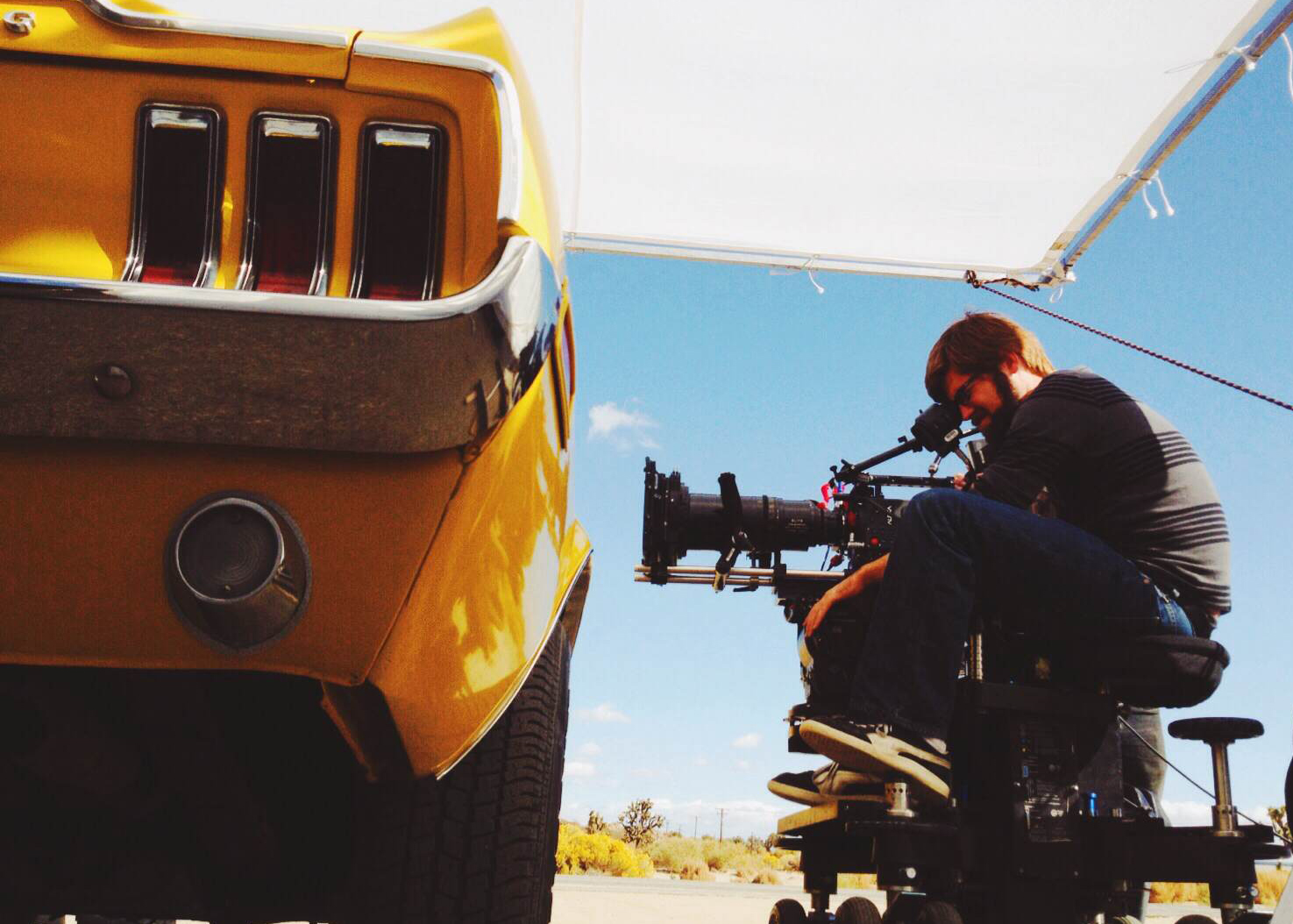
Had you used the ALEXA on previous projects and did it inform your choice on JackRabbit 29?
NM: I've used the ALEXA previously for narrative and commercial work and was confident it was the right choice for this film. Plus, with us shooting almost two hours away from the closest reliable rental house, we simply couldn't afford to deal with camera glitches. That is why I treasure the simplicity and reliability of the ALEXA. In 24 days of diverse conditions and shooting almost non-stop, it performed exceptionally. We weren't dealing with glitches, black-shading, overheating, error messages, or corrupted footage. We weren't digging through menus to change things. Functionally it is a German tank. And that is to say nothing of the image quality of the camera. Its generous and gorgeous dynamic range captured our daytime exteriors like a refined filmstock and it held so much detail out the windows when shooting interiors we had to make sure our units weren't showing! Also, the grain on the camera is quite filmic even in the most underexposed areas.
Would you say that it's more challenging to shoot anamorphic on an indie film like this one?
NM: This was a low-budget feature with a tight-knit crew where everyone wore many hats. When you shoot anamorphic, you are dedicated to that choice and it does have a monetary impact upon the film. Typically the lenses cost more than spherical lenses, and they are slower, so you may need higher output lights and everything that goes along with that. Ideally I was shooting at a T4, but with a lot of the locations, we neither had the time nor the money to relight some of the extravagant spaces we shot. With the sensitivity of the ALEXA and the fast stop of the Elites (T2.1), however, we could let practicals and well-placed units do much of the work for us.
How did AbelCine get involved in this project?
NM: My first introduction to Abel was through their many online resources for filmmaking. Additionally, a number of my film school classmates work at AbelCine LA in both the rental and sales department. Abel worked with my tight budget to provide me with a terrific camera package. We never once in 24 days had issues with Abel's gear and the prep techs were devoted to helping answer our questions and figuring out reliable, pragmatic solutions for our camera package. In my experience, AbelCine cares about empowering filmmakers to make great films.
To see more of Nicholas' work, visit nicholasmatthewsfilm.com and check out our website for more information on the ALEXA 4:3 and the anamorphic look.











